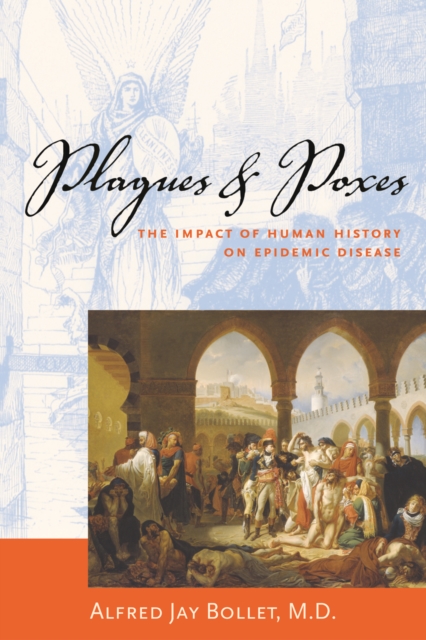Plagues & Poxes: The Impact of Human History on Epidemic Disease

Plagues & Poxes: The Impact of Human History on Epidemic Disease
Since publication of the initial version of Plagues & Poxes in 1987, which had the optimistic subtitle The Rise and Fall of Epidemic Disease, the rise of new diseases such as AIDS and the deliberate modification and weaponization of diseases such as anthrax have changed the way we perceive infectious disease. With major modifications to deal with this new reality, the acclaimed author of Civil War Medicine: Challenges and Triumphs has updated and revised this series of essays about changing disease patterns in history and some of the key events and people involved in them. It deals with the history of major outbreaks of disease - both infectious diseases such as plague and smallpox and noninfectious diseases - and shows how they are in many cases caused inadvertently by human actions, including warfare, commercial travel, social adaptations, and dietary modifications. To these must now be added discussion of the intentional spreading of disease by acts of bioterrorism, and the history and knowledge of those diseases that are thought to be potential candidates for intentional spread by bioterrorists.Among the many topics discussed are: How the spread of smallpox and measles among previously unexposed populations in the Americas, the introduction of malaria and yellow fever from Africa via the importation of slaves into the Western hemisphere, and the importation of syphilis to Europe all are related to the modern interchange of diseases such as AIDS. How the ever-larger populations in the cities of Europe and North America gave rise to crowd diseases such as polio by permitting the existence of sufficient numbers of non-immune people in sufficient numbers to keep the diseases from dying out. How the domestication of animals allowed diseases of animals to affect humans, or perhaps become genetically modified to become epidemic human diseases. Why the concept of deficiency diseases was not understood before the early twentieth century disease, after all, was the presence of something abnormal, how could it be due to the absence of something? In fact, the first epidemic disease in human history probably was iron deficiency anemia. How changes in the availability and nature of specific foods have affected the size of population groups and their health throughout history. The introduction of potatoes to Ireland and corn to Europe, and the relationship between the modern technique of rice milling and beriberi, all illustrate the fragile nutritional state th
PRP: 185.69 Lei
Acesta este Pretul Recomandat de Producator. Pretul de vanzare al produsului este afisat mai jos.
167.12Lei
167.12Lei
185.69 LeiLivrare in 2-4 saptamani
Descrierea produsului
Since publication of the initial version of Plagues & Poxes in 1987, which had the optimistic subtitle The Rise and Fall of Epidemic Disease, the rise of new diseases such as AIDS and the deliberate modification and weaponization of diseases such as anthrax have changed the way we perceive infectious disease. With major modifications to deal with this new reality, the acclaimed author of Civil War Medicine: Challenges and Triumphs has updated and revised this series of essays about changing disease patterns in history and some of the key events and people involved in them. It deals with the history of major outbreaks of disease - both infectious diseases such as plague and smallpox and noninfectious diseases - and shows how they are in many cases caused inadvertently by human actions, including warfare, commercial travel, social adaptations, and dietary modifications. To these must now be added discussion of the intentional spreading of disease by acts of bioterrorism, and the history and knowledge of those diseases that are thought to be potential candidates for intentional spread by bioterrorists.Among the many topics discussed are: How the spread of smallpox and measles among previously unexposed populations in the Americas, the introduction of malaria and yellow fever from Africa via the importation of slaves into the Western hemisphere, and the importation of syphilis to Europe all are related to the modern interchange of diseases such as AIDS. How the ever-larger populations in the cities of Europe and North America gave rise to crowd diseases such as polio by permitting the existence of sufficient numbers of non-immune people in sufficient numbers to keep the diseases from dying out. How the domestication of animals allowed diseases of animals to affect humans, or perhaps become genetically modified to become epidemic human diseases. Why the concept of deficiency diseases was not understood before the early twentieth century disease, after all, was the presence of something abnormal, how could it be due to the absence of something? In fact, the first epidemic disease in human history probably was iron deficiency anemia. How changes in the availability and nature of specific foods have affected the size of population groups and their health throughout history. The introduction of potatoes to Ireland and corn to Europe, and the relationship between the modern technique of rice milling and beriberi, all illustrate the fragile nutritional state th
Detaliile produsului









